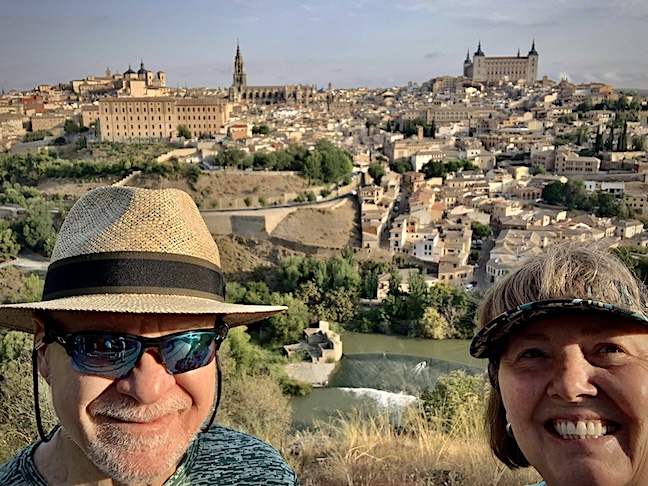Starting in 542, Toledo was the Capital of the Visigoth Kingdom, then Spain, until Philip II moved Spain’s capital to Madrid in 1560. Toledo is known as the “City of Three Cultures” because Christians, Muslims, and Jews lived there in harmony.
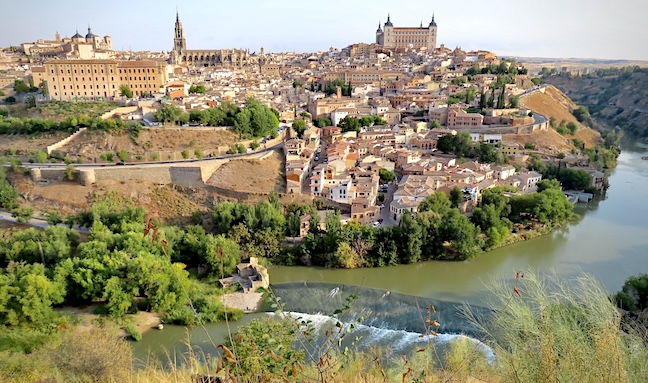
The Targus River is Spain’s longest and curves around Toledo on three sides like a wide moat. Coupled with Toledo’s medieval surrounding wall, the city was well fortified to repel attacks.

The medieval Puente de San Martin bridge was constructed in the late 14th century and was one of the longest bridges in the world when it was built. Now, only pedestrians may cross the bridge between the fortified towers on each end.
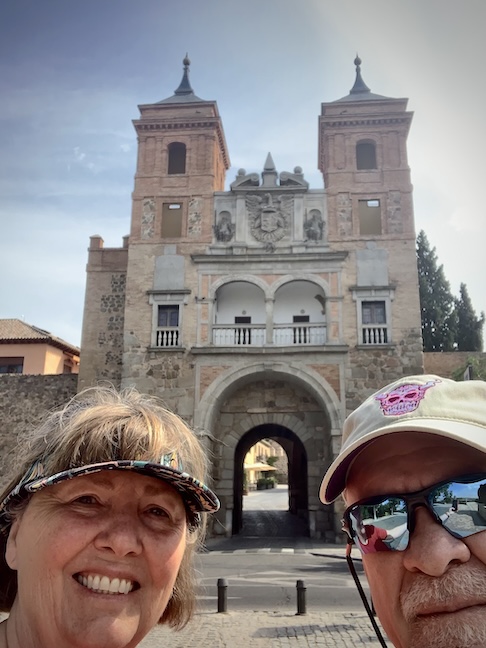
The heavily fortified Puerta del Cambrón, also known as the “Gate of the Jews,” is one of five gates in Toledo’s outer wall used to defend the city in the Middle Ages.
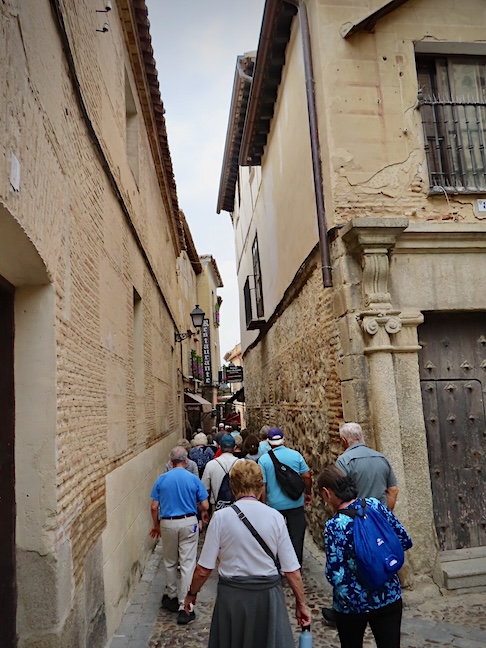
Toledo’s narrow streets are considered Spain’s most bewildering. Getting lost in the maze is a pleasure as the Old City is small, and only 10,000 residents live within the walls first built by Romans and expanded by the Visigoths, Arabs, and Reconquista Christians.
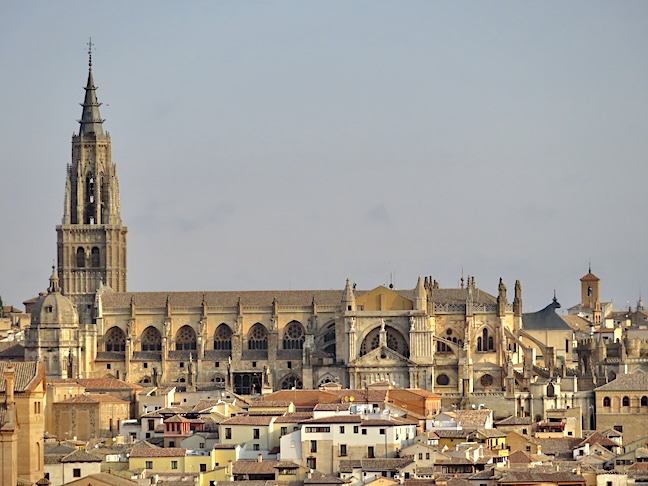
The Visigoth Christians began worshiping on this spot over 1,500 years ago. In 711, Islamic Moors took over and erected a majestic mosque, replaced by the Gothic Toledo Cathedral by the conquering Christians in 1226. Spain has a long history of places of worship built by conquerers atop the temples of the vanquished.
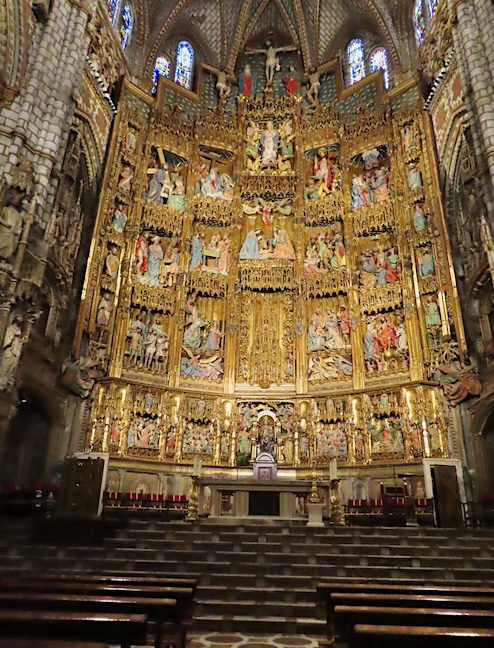
The staggering main altarpiece rises eighty feet and is made of wood covered with real gold, depicting scenes of the major highlights of Jesus’ life from birth to his crucifixion. It is considered Spain’s most magnificent nave.
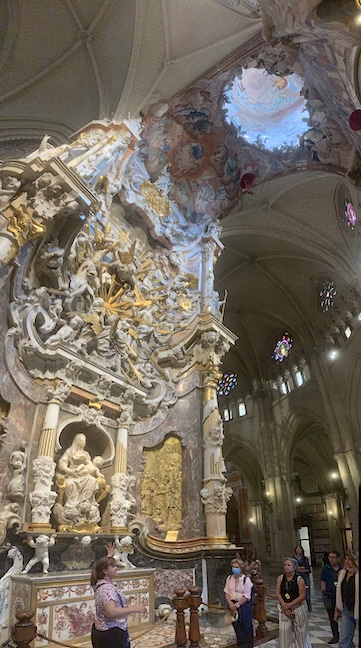
This elaborately carved altarpiece soars into a hole cut into the ceiling that allows light to shine on the Baroque masterpiece during the summer solstice.
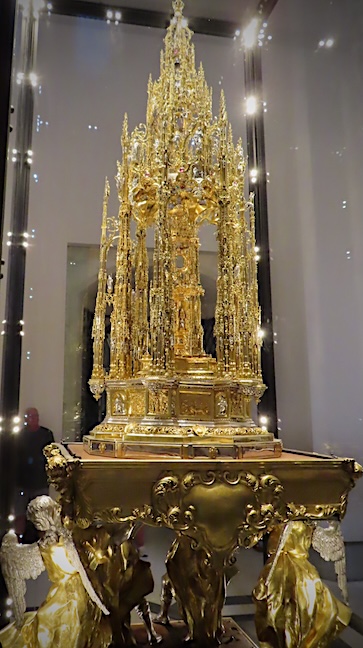
The massive Toledo monstrance is three pieces. The pedestal held up by angels was created in 1741-1742 by Manuel de Bargas Machuca out of silver and gilded bronze. The silver center is the work of Enrique de Arfe in 1515-1523. The portable top is a gold masterpiece by Jaume Aimeric produced from 1495-1499. Jesus’ presence lives in the consecrated Eucharist, allowing Catholics the opportunity to commune with Christ.
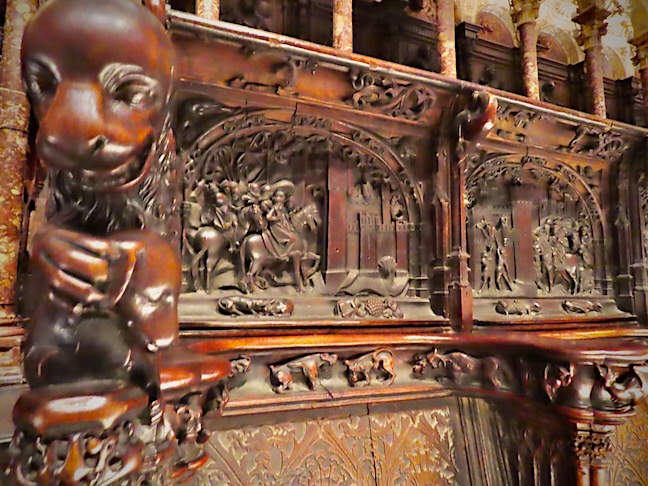
The wooden choir consists of 120 intricately carved walnut seats where only priests celebrate high mass.
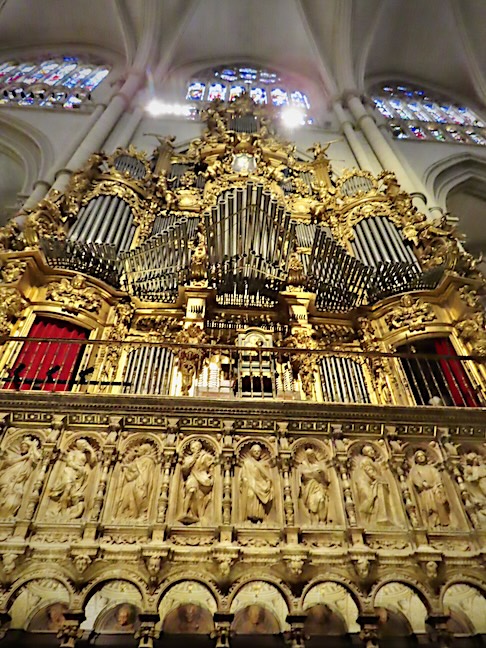
The Toledo Cathedral has 12 organs. Pictured above is the centrally located organ in the choir. The primary “Organ of the Emperor” adorns the transept, and the most important chapels have organs.

Awestruck and slightly dazed, we left the Toledo Cathedral with our local guide through the main entrance named the “Portal of Forgiveness.”
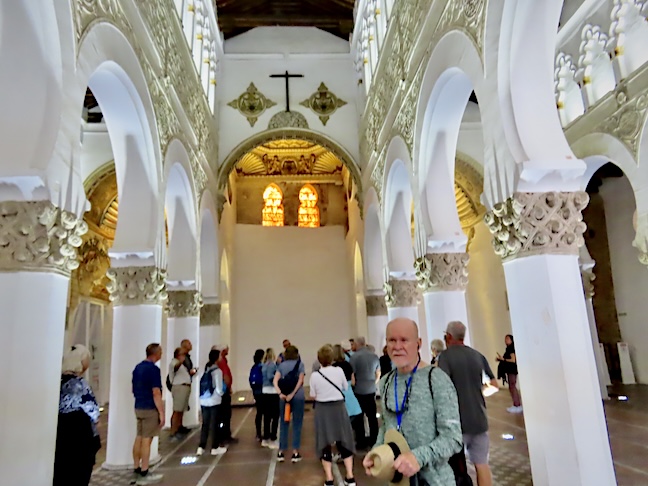
The contrast could not be starker between the Synagogue Of Santa Maria la Blanca in the Jewish quarter of the historic old city and the Toledo Cathedral. Records are fuzzy, but the Moorish structure is believed to have been erected in the twelfth or early thirteenth century and deemed Europe’s oldest synagogue. Jews lived, worked, and practiced Judaism here until Isabel and Ferdinand booted them out in 1492.
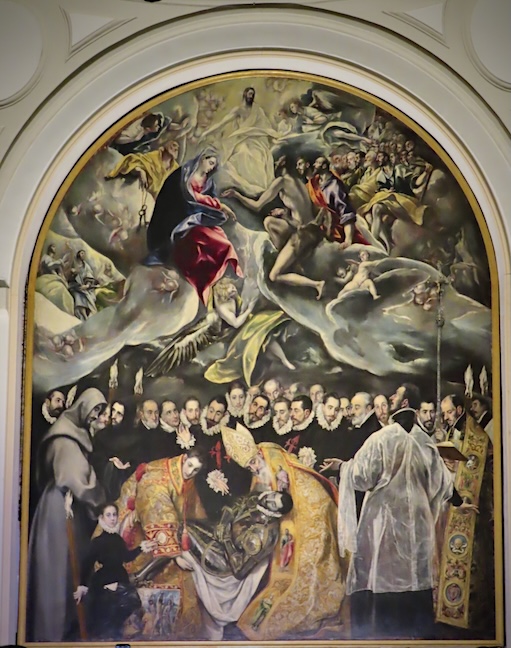
The unassuming church, Santo Tomé, houses El Greco’s masterpiece, The Burial of the Count of Orgaz, which is considered the medieval painter’s finest achievement.
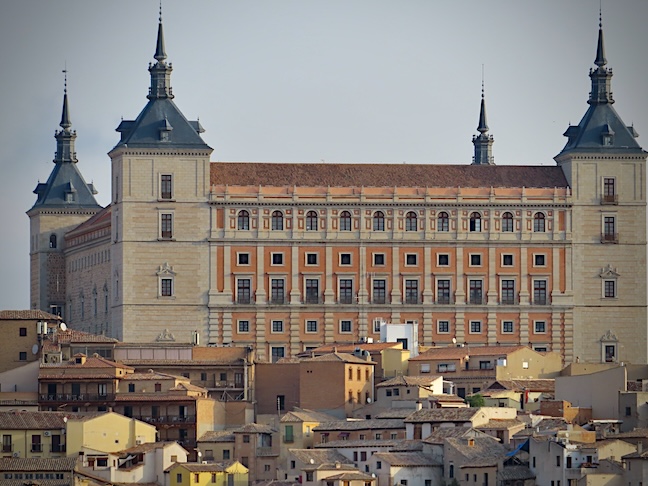
The Alcázar fortress is home to the Army Museum and Spain’s military history from 1492 to the twentieth century. The structure is imposing, but we took a pass on perusing more ancient weaponry.
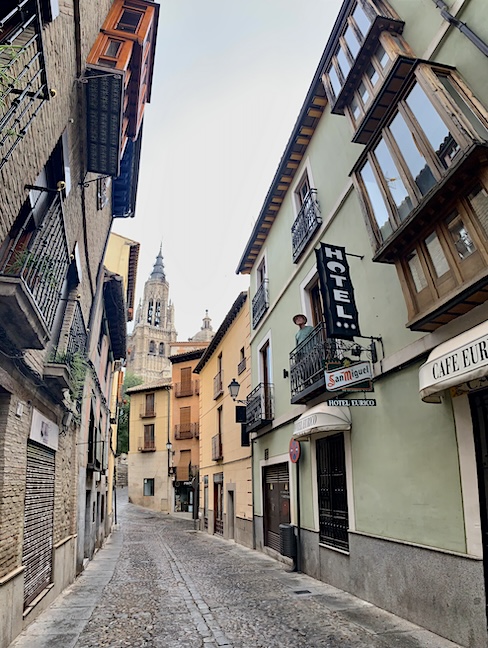
Most tourists visiting Toledo are daytrippers from the surrounding areas. We spent the night in the largely deserted heart of the ancient city at the quaint Hotel Eurico. Adding to the medieval charms of roaming the narrow lanes was a persistent thunderstorm. We ate skirt steak, salad, and potatoes in a tiny family-owned cafe while the owners waited patiently for us to finish so they could close for the night. Another hole-in-the-wall shop served up excellent gelato and provided shelter from an extra heavy-duty downpour. The locals were more relaxed and talkative after the crowds dispersed, including us like friends in winding down the day.

